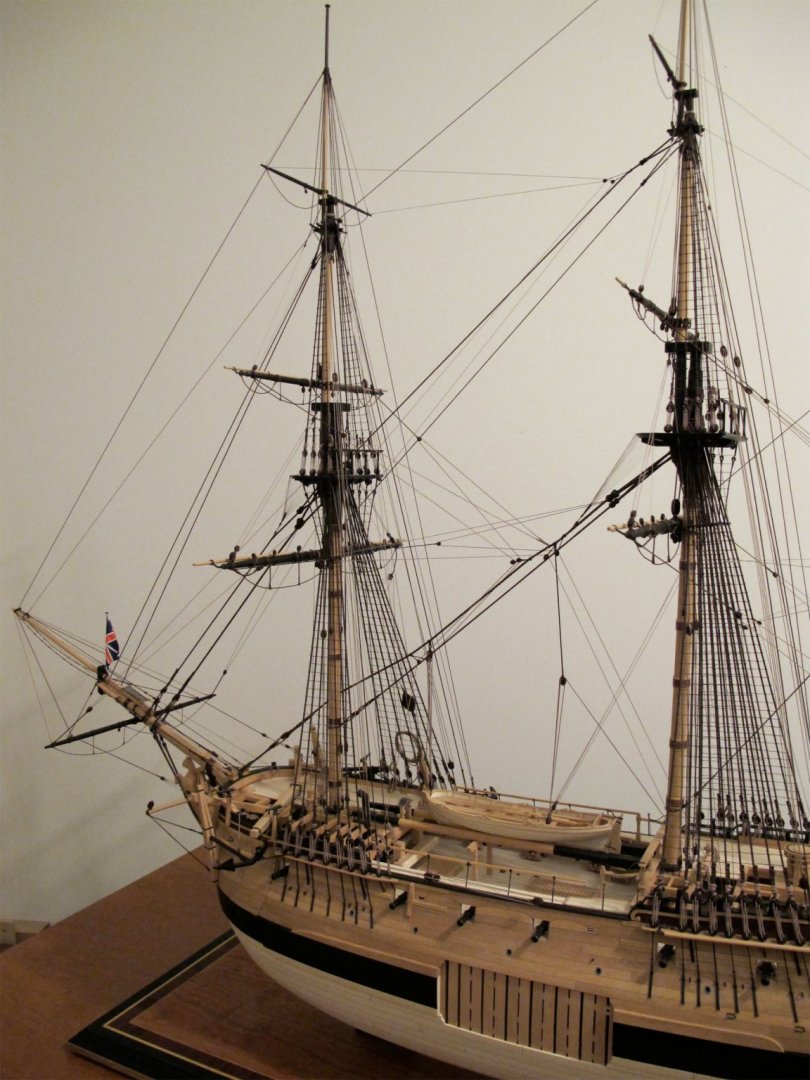-
Posts
13,361 -
Joined
-
Last visited
Content Type
Profiles
Forums
Gallery
Events
Everything posted by druxey
-
Angels on the head of a pin....crowns on the head of a match!
- 740 replies
-
- Tudor
- restoration
-
(and 4 more)
Tagged with:
-
Fairing on the fly! The photo with the clothes peg shows me how small your model actually is.
- 740 replies
-
- Tudor
- restoration
-
(and 4 more)
Tagged with:
-
Actually the Melampus model does show certain lines that are of a later date than the ship. This may be a result of restoration rather than lack of accuracy of recording on Petersson's part.
-
Sorry about your unglück, Dafi. But congratulations on your new jungle - I mean, workshop! It always takes time to relocate everything in a new setting and hope you enjoy your new space.
-
The Swan class plans show the open hearts rigged with a slightly longer collar than Peterssen's drawing, but I would not characterize them as being 'in air'. Attached is a photo of a modern model from about 1770. The slightly longer legs to the collar give lateral clearance to the jibboom.
-
Welcome and dobri!
-
Interestingly, Shag Rock is now a popular diving site: Dive Site: Shag Rock Location: Mountbatten, Plymouth Sound Description: Reef Depth: 16 metres (50 feet) Visibility: 25 metres (82 feet) Rating: **** This reef can be reached by RIB from Fort Bovisand. The dive was done at the end of May with fantastic vis in gin clear water. The stony seabed is a mixture of green and purple pebbles with perfect seaweed gullies that could be straight from a fish tank. Marine life includes dogfish, rays, wrasse and crabs. Jenny Pickles, BSAC Dive Leader
-
Congratulations on a fine job of an unusual subject. Well done!
- 263 replies
-
- nave tonda
- round ship
-
(and 2 more)
Tagged with:
-
That book looks interesting and well written. I think I'll bite! Thanks for bringing it to our attantion, Martin.
-
Just stumbled across your log, Martin. Great stuff! Although I was surprised to see the date stamps on the earlier posts. Hopefully not another three years to completion.
-
While the advice above is good, I would not recommend CA glue as it ends up making line brittle. Dilute white glue or acrylic matt medium are better choices, as Greg recommended.
-
Harder to read after his accident, I'm sure.
-
Welcome! We'll watch for your progress. There's lots of help here on MSW if you need it.
-
Can you come and restore my hair too, Steven? That mix worked out very well. Soon you'll be recycling everything from the workshop waste bin.
-
One can do the 'uncurving' as Alan suggests, or the other way is to see the curve in plan, then take a paper tick strip, place it against the curve at one end and 'walk' it along the curve bit by bit, marking off the counter timbers or whatever as you go until you reach the other end. The tick strip then becomes the 'unwrapped' curve.
About us
Modelshipworld - Advancing Ship Modeling through Research
SSL Secured
Your security is important for us so this Website is SSL-Secured
NRG Mailing Address
Nautical Research Guild
237 South Lincoln Street
Westmont IL, 60559-1917
Model Ship World ® and the MSW logo are Registered Trademarks, and belong to the Nautical Research Guild (United States Patent and Trademark Office: No. 6,929,264 & No. 6,929,274, registered Dec. 20, 2022)
Helpful Links
About the NRG
If you enjoy building ship models that are historically accurate as well as beautiful, then The Nautical Research Guild (NRG) is just right for you.
The Guild is a non-profit educational organization whose mission is to “Advance Ship Modeling Through Research”. We provide support to our members in their efforts to raise the quality of their model ships.
The Nautical Research Guild has published our world-renowned quarterly magazine, The Nautical Research Journal, since 1955. The pages of the Journal are full of articles by accomplished ship modelers who show you how they create those exquisite details on their models, and by maritime historians who show you the correct details to build. The Journal is available in both print and digital editions. Go to the NRG web site (www.thenrg.org) to download a complimentary digital copy of the Journal. The NRG also publishes plan sets, books and compilations of back issues of the Journal and the former Ships in Scale and Model Ship Builder magazines.




